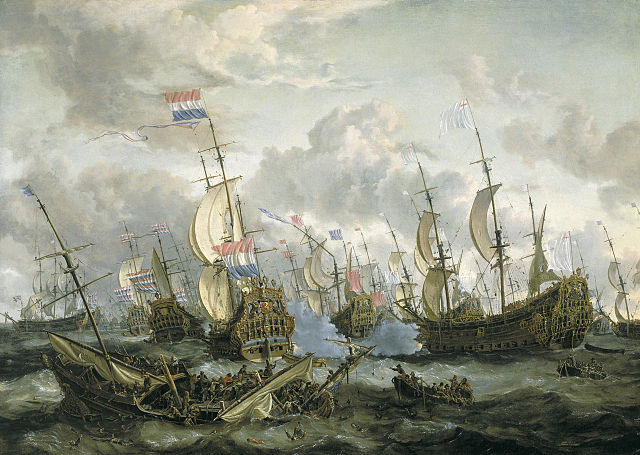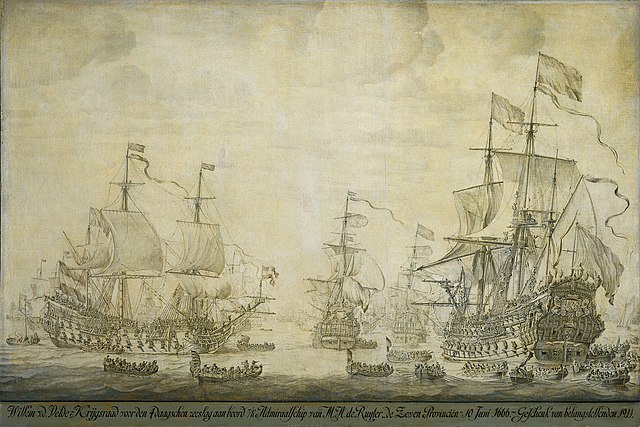Naval history of the Netherlands
The naval history of the Netherlands dates back to the 15th century. As overseas trade was a traditional cornerstone of the Dutch economy, naval defence was indispensable for the protection of commercial interests.
The Royal Prince and other vessels at the Four Days Fight, 11–14 June 1666 by Abraham Storck depicts a battle of the Second Anglo-Dutch War. In the foreground Swiftsure with Berkeley sinks. On the right the grounded Prince Royal with Admiral Ayscue surrenders by firing white smoke; de Ruyter on De Zeven Provinciën accepts. In between, HMS Royal Charles can just be seen with a broken mast.
The Battle of Scheveningen, 31 July 1653 during the First Anglo-Dutch War (1652–54) by Jan Abrahamsz. Beerstraaten (1622–1666)
The Battle of Terheide, 10 August 1653: episode from the First Anglo-Dutch War (1652–54) by Willem van de Velde the elder, 1657
The Four Days' Battle Council on board the "Zeven Provincien", the flagship of Admiral de Ruyter, 10 June 1666, by Villem van de Velde the elder, 1693.
Politics and government of the Dutch Republic
The Dutch Republic existed from 1579 to 1795 and was a confederation of seven provinces, which had their own governments and were very independent, and a number of so-called Generality Lands. These latter were governed directly by the States-General, the federal government. The States-General were seated in The Hague and consisted of representatives of each of the seven provinces.
Courtyard of the Amsterdam Stock Exchange, 1653, which underpinned a large part of Amsterdam's wealth.
The Binnenhof in The Hague, the seat of the States-General and the center of Dutch political life.
Coat of arms of the States-General of the United Provinces ("States"/Staten) of the Netherlands. The lion with the arrows, sword, and crown are now part of the Coat of arms of the Netherlands.
Dutch Attack on the Medway, June 1667' Pieter Cornelisz van Soest c. 1667. The captured ship Royal Charles is right of centre.








